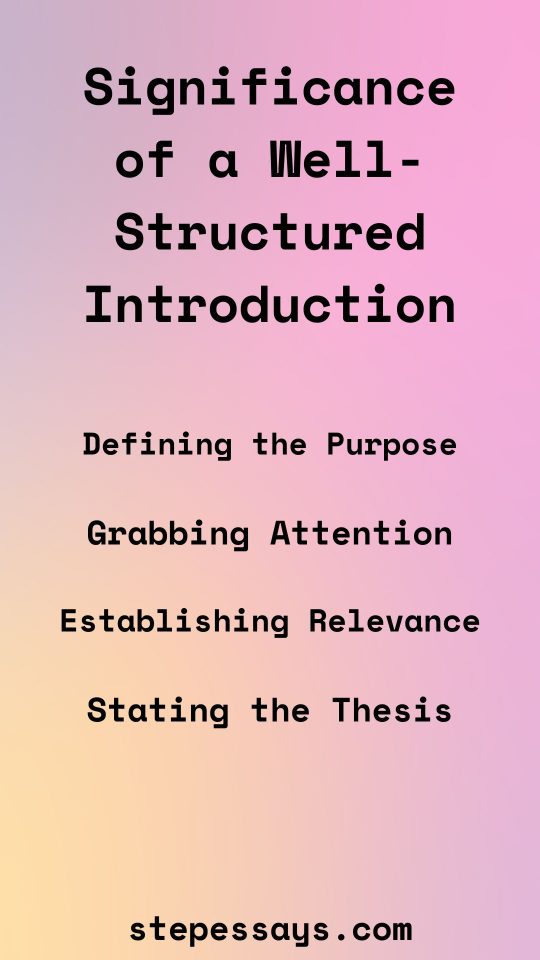Abstract:
Commencing a peer-reviewed paper marks the foundation upon which the entire scholarly discourse rests. A compelling beginning not only captivates the readers but also sets the tone for the research journey ahead. This guide aims to explore the process of crafting the perfect start for a peer-reviewed paper. From formulating an attention-grabbing introduction to delineating the research objectives, this comprehensive manual offers invaluable insights and strategies for scholars at every stage of their academic careers.
Keywords: Peer review, academic writing, introduction, research objectives, scholarly communication.
Introduction:
The initiation of a peer-reviewed paper holds significant importance as it serves as the gateway to the scholarly discourse. A well-crafted beginning not only piques the interest of the readers but also provides a roadmap for navigating through the research terrain. In this guide, we look into the art of inaugurating a peer-reviewed paper, exploring the steps of composing an engaging introduction, articulating research objectives, and establishing the context for the study. Whether you are a novice researcher or a seasoned academic, mastering the art of a perfect start is essential for advancing your scholarly endeavors.
-
Understanding the Significance of a Well-Structured Introduction:

Significance of a Well-Structured Introduction
1.1 Defining the Purpose: The introduction serves as the launching pad for the paper, providing essential background information, contextualizing the research problem, and outlining the significance of the study.
1.2 Grabbing Attention: Captivating the readers’ attention from the outset is crucial. Techniques such as posing thought-provoking questions, presenting startling statistics, or narrating compelling anecdotes can effectively engage the audience.
1.3 Establishing Relevance: Clearly delineating the relevance of the research topic within the broader disciplinary framework helps readers understand its significance and implications for the field.
1.4 Stating the Thesis: A succinct and precise statement of the research objectives or hypothesis sets the stage for the subsequent sections of the paper, guiding readers on what to expect.
-
Crafting an Engaging Introduction:
2.1 Hooking the Reader: Begin with a captivating opening sentence or paragraph that intrigues the readers and compels them to look further into the paper.
2.2 Providing Context: Offer background information on the research topic, highlighting its importance and relevance in the field. This contextualization helps orient readers and prepares them for the ensuing discussion.
2.3 Reviewing Literature: Briefly summarize relevant literature to demonstrate the existing knowledge gaps and justify the need for the current study. However, avoid looking too deeply into detailed discussions, as this will be elaborated in the literature review section.
2.4 Articulating Objectives: Clearly state the research objectives or research questions that the study seeks to address. This provides clarity and direction to the readers, guiding them through the subsequent sections of the paper.
-
Setting Clear Research Objectives:
3.1 Defining Goals: Precisely articulate the overarching goals and specific objectives of the study. These objectives should be clear, measurable, and aligned with the research problem identified in the introduction.
3.2 Prioritizing Objectives: Rank the research objectives in order of importance or logical sequence, ensuring that each objective contributes to the overall research aim.
3.3 Ensuring Feasibility: Assess the feasibility of achieving the stated objectives within the constraints of the study, including time, resources, and scope.
3.4 Aligning with Methodology: Ensure that the research objectives are closely aligned with the chosen research methodology, allowing for the collection and analysis of relevant data to address the research questions.
-
Establishing the Context for the Study:
4.1 Identifying Research Gaps: Highlight the gaps or limitations in existing literature that necessitate the current study. This demonstrates the novelty and originality of the research, contributing to its significance.
4.2 Providing Justification: Offer a rationale for why the research is important and timely, addressing potential implications for theory, practice, or policy within the field.
4.3 Considering Practical Applications: Discuss the practical implications of the study and how its findings may be applied to real-world situations or contribute to practical solutions.
4.4 Acknowledging Limitations: Recognize the limitations and constraints of the study, including potential biases, methodological limitations, or external factors that may impact the validity of the findings.
Conclusion:
Initiating a peer-reviewed paper is both an art and a science, requiring effecetive attention to detail and strategic thinking. By mastering the art of crafting an engaging introduction, articulating clear research objectives, and establishing the context for the study, scholars can lay a strong foundation for their research endeavors. Through thoughtful consideration of the audience, relevance of the topic, and alignment with existing literature, researchers can ensure that their papers not only contribute meaningfully to the scholarly discourse but also resonate with readers across disciplinary boundaries. As you embark on your writing journey, remember that the perfect start sets the stage for the entire research narrative, guiding readers on a compelling intellectual voyage.
